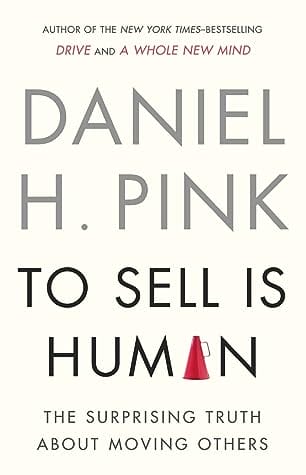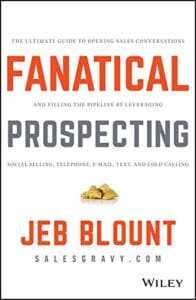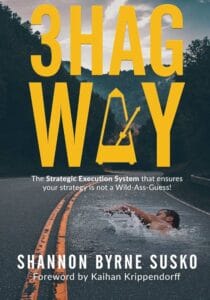If prospecting, pricing, and training aren’t holding your sales organization back from success, you might be putting a break on revenue growth. As a sales leader, you must direct the sales strategy. That includes making thoughtful decisions about the sales organization structure.
Four Signs That Your Sales Organization Needs An Update
Changing your company’s sales organizational structure is disruptive. It can temporarily reduce performance. Before embarking on this change, consider whether it is the right move. If you see the following signs, an organizational change may be needed.
- Significant Changes To Products and Services
If your company has recently added several new offerings, your old way of selling may need an update. Asking salespeople to become knowledgeable on various products is challenging, especially when those products are highly customizable. As you add new products, it becomes more difficult for your salespeople to stay up to date and sell everything effectively.
- Significant Pricing Changes
Annual price changes are not a concern here. Instead, the question is whether the organization has developed more significant percentage increases in prices, new bundles, or the elimination of older price offerings. For example, an organization might have developed custom price quotes for enterprise customers while smaller customers pay a standard price. If this indicator is present with the next item in the list, it may be vital to reassess the organizational structure.
- Major Change In Target Market
Changing your target market or distribution model may require a new sales approach. For example, a successful marketing program may significantly increase the quantity and quality of inbound leads. In that case, assigning dedicated sales reps to handle those leads may be worthwhile. Further, pursuing a new target market in another country or seeking institutional (e.g., government or university) customers may need a different approach.
- Declining Employee Satisfaction
Many factors contribute to a fall in employee satisfaction. For instance, your sales staff may want to avoid long commutes and switch to emphasizing remote work. Another factor might be a perceived lack of career advancement opportunities in the sales organization. An updated sales organization structure may help to address some of these challenges. In addition, boredom may strike some of your employees if they feel there is little or no innovation in the department.
After reviewing the state of your sales organization, you’ve decided that it is time to update your sales team. Use this five-step process to approach the question of updating your sales organizational structure for strategic growth.
Aligning Your Sales Organization And Sales Strategy
Step 1: Review Your Sales Strategy
Resist the urge to start by tinkering with your sales organizational chart. Instead, the first step should focus on your sales strategy. Take a close look at your strategy with the following questions.
- What type of customer do we want more of?
- What are the critical steps in our sales cycle?
- Are we on track to meet the organization’s revenue goals annually or quarterly?
- Are salespeople receiving good coaching and support to continue growing?
- Do we have the proper training and technology to support the team?
- Is the sales team effective at talent management? Are there opportunities for both newer and experienced salespeople to thrive?
In addition to hitting this year’s revenue target, consider if you have the right capabilities to hit next year’s growth goals. For instance, your strategy may include expanding to take on government customers with complex procurement processes. In that situation, ask if your current sales team is equipped to execute the company’s strategy to sell to state and federal government customers.
Step 2: Is the current organizational structure helping or hurting?
The next phase of the process will require some deep thought. You must reflect on what your salespeople tell you in meetings and their behavior. Evaluate whether the team has the capacity and skills to execute your sales strategy.
In a minor sales team of 10 people or less, the best way to gather information is to set up 1-on-1 meetings with each of your salespeople. Before the meeting, send a summary of the organization’s sales strategy. In the meeting, ask each person for their perspective on what is needed to deliver the strategy.
In a larger sales organization, gather information by using a combination of employee surveys and meetings with sales managers.
After you receive the responses, look for themes in the responses. For example, if many employees complain about non-sales administration tasks, you may want to add a sales administrative assistant.
Step 3: Develop your ideal sales structure
Now that you have a renewed understanding of your sales strategy and input from the team, it is time to develop your ideal sales organization chart. Don’t let practical considerations stop you from dreaming big! For example, if you want to support each account executive with a sales development representative (SDR), note that on the chart. Note that factor if you see value in segmenting your sales team between small businesses and enterprises.
After you finish the ideal sales structure of job titles and reporting lines, it is time to look closely at your current sales talent.
Step 4: Examine Sales Staff Performance Vs. The Strategy and Organization Chart
This step will call on your judgment and understanding of each person on the sales team. In essence, ask what roles each person should play in the new sales organization you are developing.
As you go through the process, start with your top sales performers. Retaining these salespeople should be a top priority. How can you offer growth in responsibilities and compensation to your senior staff? Some companies recognize their top performers by giving their sales titles (e.g., enterprise account executive) that carry higher quotas, more complex deals, and higher compensation.
After evaluating your top performers, assigning the rest of your staff to new roles in the organization chart should be easier. If some people in the sales team don’t have an apparent new home in the new organization chart, you have some decisions to make. For example, an outstanding salesperson supporting current customers may perform better in a customer service role. Alternatively, if you see no way to enhance their performance, it may be time to part ways with some salespeople.
Step 5: Launch the new organization structure for sales
By this step, you are ready to announce the sales organization structure. Employees likely know that change is coming because you have already signaled your intentions through meetings and surveys. Factoring employee input into the new organizational structure will help to retain many of your best and brightest salespeople.
As you prepare to announce the new sales organization, remember that this is a sales task. If your sales staff do not see the value in the new way of doing business, they may start heading for the exits and leave the company. Take the time to meet with staff individually and introduce their new responsibilities.
What If You Have Gaps In Your Sales Organization Chart?
Bringing a new sales organization chart to life often takes new employees. Reach out to Peak Sales Executive Search today to discuss your sales talent needs. We’ve helped companies find sales managers, sales vice presidents, and many other roles.



















